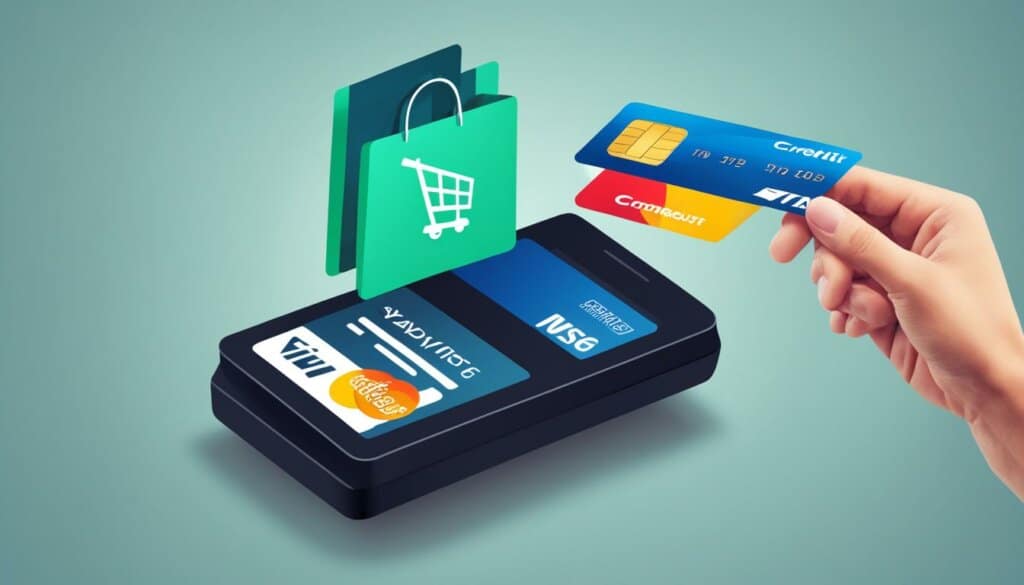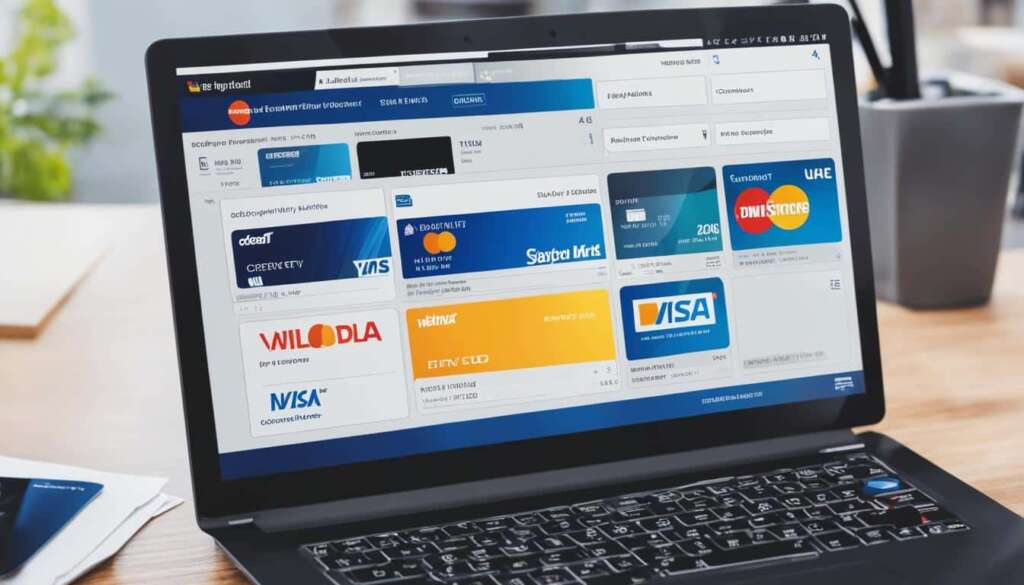Table of Contents
E-commerce has experienced significant growth in recent years, with projections indicating that 23% of all sales will be conducted online by 2025. As businesses embrace the digital marketplace, it becomes crucial to understand the diverse range of payment methods available and their impact on customer experience, conversion rates, and revenue.
When it comes to e-commerce payment methods, businesses have a wide range of choices. From traditional credit and debit cards to emerging options like digital wallets, mobile payments, buy now pay later services, and even cryptocurrency, there are various ways for customers to make online transactions.
So, what are the trends shaping e-commerce payment methods? And how can businesses decide which ones to offer?
In this article, we’ll explore the latest trends in e-commerce payment methods and provide insights into the factors businesses must consider when making choices. From customer preferences to transaction fees, security measures to compatibility with e-commerce platforms, we’ll guide you through the decision-making process.
Stay tuned to unravel the fascinating world of e-commerce payment methods, discover the current trends, and make informed choices that drive customer satisfaction and business success.
What is E-commerce?
E-commerce, or electronic commerce, refers to the buying and selling of goods and services online. It has transformed the way businesses operate, offering advantages such as 24/7 availability, global reach, and lower operating costs compared to traditional brick-and-mortar stores.
There are several types of e-commerce models, including business-to-consumer (B2C), business-to-business (B2B), consumer-to-consumer (C2C), and consumer-to-business (C2B). Each model caters to different types of transactions and customer interactions.
E-commerce platforms require secure online payment processing to facilitate smooth transactions. Additionally, these platforms often provide additional features such as customer reviews, product recommendations, and customer support to improve the overall shopping experience.
To better understand the concept of e-commerce, consider the following example:
John runs a small clothing business. He decides to expand his reach by launching an online store. With an e-commerce platform, John can showcase his products, accept online orders, and process payments securely. This allows him to cater to a wider audience, increase sales, and reduce the need for physical stores.
Advantages of E-commerce
E-commerce offers numerous advantages for businesses and consumers alike. Some key advantages of e-commerce include:
- 24/7 Availability: Online stores are accessible at any time, allowing customers to shop at their convenience.
- Global Reach: E-commerce eliminates geographical limitations, enabling businesses to reach customers worldwide.
- Lower Operating Costs: E-commerce eliminates the need for physical stores, reducing expenses related to rental, utilities, and staffing.
These advantages make e-commerce an attractive option for businesses looking to expand their operations and reach a larger customer base.
Types of E-commerce Models
There are various types of e-commerce models that cater to different types of transactions:
| E-commerce Model | Description |
|---|---|
| Business-to-Consumer (B2C) | Businesses sell products or services directly to consumers through online platforms or websites. |
| Business-to-Business (B2B) | Businesses sell products or services to other businesses through online portals or customized platforms. |
| Consumer-to-Consumer (C2C) | Individual consumers sell products or services to other consumers through online marketplaces or classified platforms. |
| Consumer-to-Business (C2B) | Individual consumers provide products or services to businesses through online platforms or freelance networks. |
Each e-commerce model has its own characteristics and target audience, catering to specific transaction types and business relationships.
Types of E-commerce Payment Methods
E-commerce payment methods have diversified as the industry has expanded. Customers now have a variety of options to choose from when making online purchases. Let’s explore the different types of payment methods available in e-commerce.
Credit and Debit Cards
Credit and debit cards are the most common and widely accepted payment methods in e-commerce. They offer customers a quick and convenient way to make payments. By entering their card details, customers can complete transactions securely and efficiently.
Digital Wallets
Digital wallets have gained popularity in recent years. These wallets, such as PayPal, Apple Pay, and Google Pay, provide a secure and convenient way for customers to store their payment information. With just a few clicks, customers can make purchases using the stored payment details.
Bank Transfers
In certain regions, bank transfers are a preferred payment method. Particularly popular in Europe and Asia, bank transfers allow customers to directly transfer funds from their bank accounts to the merchant’s account. Bank transfers offer a secure and reliable option for customers.
Cash on Delivery
In countries with low credit and debit card usage, cash on delivery is a common payment method. With cash on delivery, customers pay for their purchases when they receive them. This option provides a level of convenience and trust for customers who may not have access to other payment methods.
Mobile Payments
Mobile payments are becoming increasingly popular. With the rise of smartphones, customers can make payments using mobile wallets or payment apps. These mobile payment options provide convenience and flexibility for on-the-go transactions.
Buy Now Pay Later
Buy now pay later services are gaining popularity among e-commerce customers. These services allow customers to purchase products and pay for them in installments over time. This option provides customers with financial flexibility and the ability to spread out their payments.
Cryptocurrency
Cryptocurrency is a digital form of payment that is gaining acceptance in the e-commerce industry. Some online retailers now accept cryptocurrencies like Bitcoin as a payment option. Cryptocurrencies offer customers a secure and decentralized method of payment.
Prepaid Cards
Prepaid cards are similar to debit cards and can be used for online purchases. Customers load a specific amount of money onto the card, and then they can use it to make payments. Prepaid cards provide customers with a convenient and controlled way to manage their online payments.
These are just some of the various e-commerce payment methods available to customers today. Offering a range of payment options can enhance the shopping experience and cater to diverse customer preferences.

| Payment Method | Advantages |
|---|---|
| Credit and Debit Cards | – Quick and convenient – Widely accepted |
| Digital Wallets | – Secure storage of payment information – Easy and fast transactions |
| Bank Transfers | – Secure and reliable – Preferred in certain regions |
| Cash on Delivery | – Convenient for customers without access to cards – Builds trust with customers |
| Mobile Payments | – Convenient for on-the-go transactions – Provides flexibility |
| Buy Now Pay Later | – Financial flexibility for customers – Spreads out payments |
| Cryptocurrency | – Secure and decentralized – Offers privacy |
| Prepaid Cards | – Convenient and controlled – No risk of debt |
How to Decide Which E-commerce Payment Methods to Offer
When it comes to choosing the right e-commerce payment methods to offer, businesses need to take into consideration various factors that can impact customer satisfaction and revenue. By analyzing customer preferences, market standards, transaction fees, security and fraud prevention measures, compatibility with the e-commerce platform, demographics, and geographical location, businesses can make informed decisions that cater to their target audience and enhance the overall shopping experience.
Customer Preferences and Market Standards
Understanding customer preferences is key to selecting payment methods that align with their expectations. Conducting market research can provide valuable insights into the payment methods preferred by your target audience and even your competitors. By examining market standards and industry benchmarks, you can ensure that your payment options are in line with current trends and customer expectations.
Transaction Fees
Transaction fees play a significant role in the selection of e-commerce payment methods. It’s important to consider the financial impact these fees can have on your business. Credit card transactions typically come with higher fees compared to alternative payment methods such as digital wallets or bank transfers. Evaluating the costs associated with each payment method can help businesses optimize their revenue streams.
Security and Fraud Prevention
Ensuring the security and fraud prevention of online transactions is of utmost importance for any e-commerce business. Payment methods that offer advanced security measures, such as two-factor authentication and encryption, can instill confidence in customers and protect their sensitive information. Prioritizing security not only safeguards customers but also safeguards your business from potential risks and liabilities.
Compatibility with the E-commerce Platform
Seamless integration with your e-commerce platform is vital for a smooth and efficient payment process. Some payment methods may require additional integration work or specific technical requirements. It’s essential to choose payment options that seamlessly integrate with your e-commerce platform to provide a seamless experience for your customers.
Demographics and Geographical Location
Demographics and geographical location can influence payment method preferences. Different demographic groups or regions may have distinct payment preferences. Understanding your target audience and their payment habits based on their demographics and geographical location can help you tailor your payment options to their specific needs and preferences.
Considering all these factors allows businesses to make informed decisions about the e-commerce payment methods they should offer. Stripe is a reputable payment provider that supports a wide range of payment methods and currencies, making it a suitable choice for e-commerce businesses looking for flexibility and compatibility.
By carefully evaluating customer preferences, market standards, transaction fees, security and fraud prevention measures, compatibility with the e-commerce platform, demographics, and geographical location, businesses can optimize their payment options and create a seamless and secure shopping experience for their customers.
| Factors to Consider | Considerations |
|---|---|
| Customer Preferences | Conduct market research Understand target audience Analyze competitor offerings |
| Market Standards | Stay up to date with industry trends Align with current market expectations |
| Transaction Fees | Evaluate costs associated with different payment methods Optimize revenue streams |
| Security and Fraud Prevention | Ensure advanced security measures Protect customer data and business |
| Compatibility with E-commerce Platform | Seamless integration Consider technical requirements |
| Demographics and Geographical Location | Understand target audience preferences Adapt to regional payment habits |
Payment Trends in E-commerce
The e-commerce industry is witnessing a convergence of online and offline payment methods, as customers increasingly embrace frictionless payment options. Mobile and digital wallets, such as Apple Pay, Google Pay, and Shop Pay, have become the go-to choices for seamless transactions. With the rise of one-click payments and in-app purchases, customers can complete transactions faster and with fewer hurdles. As a result, online and offline payment methods are blending, providing a seamless experience across channels.
Moreover, the integration of payment apps into people’s lifestyles is transforming the way transactions are conducted. Payment apps are no longer just tools for transferring money; they have become lifestyle apps, offering access to virtual products and services. For instance, apps like Venmo and Alipay allow users to split bills, purchase event tickets, or even donate to charities, seamlessly integrating financial transactions into their daily routines.
“Payment apps are no longer just tools for transferring money; they have become lifestyle apps, offering access to virtual products and services.”
Buy now pay later companies have also gained significant traction in the e-commerce industry. These companies offer consumers the option to make purchases and pay for them in monthly installments, providing greater flexibility and affordability. With the rise of online shopping, buy now pay later options have become an attractive alternative to traditional credit cards, enabling consumers to manage their finances more effectively while enjoying their purchases.
QR codes have become ubiquitous in various settings, revolutionizing contactless payments. From restaurants to physical stores, QR codes enable customers to make payments quickly and securely using their mobile devices. Additionally, QR codes provide an opportunity for businesses to offer discounts and rewards, creating a seamless experience while incentivizing customer loyalty.
Overall, these payment trends in e-commerce highlight the ever-evolving nature of the industry. The blending of online and offline payment methods, the integration of payment apps into everyday life, the rise of buy now pay later solutions, and the prevalence of QR codes showcase the importance of embracing innovative payment options to meet customer expectations and drive business growth.

| Payment Trends in E-commerce | Key takeaway |
|---|---|
| Online and offline payment methods blend | Customers expect a seamless payment experience across online and offline channels. |
| In-app tips | Creators can monetize their content and generate revenue directly through in-app tips. |
| Digital wallets | Popular digital wallets like Apple Pay, Google Pay, and Shop Pay should be offered as payment options. |
| Payment apps as lifestyle apps | Payment apps provide access to virtual products and services beyond just financial transactions. |
| Buy now pay later companies | Consumers increasingly opt for buy now pay later options to manage their finances and make affordable purchases. |
| QR codes | Contactless payments and discounts are facilitated through the widespread use of QR codes. |
Conclusion
Offering a diverse range of e-commerce payment methods is crucial for providing a positive customer experience and increasing conversion rates, ultimately boosting revenue. By considering customer preferences, transaction fees, security, compatibility, demographics, and geographical location, businesses can make informed decisions about which payment methods to offer.
The online payment landscape is constantly evolving, and businesses need to stay up to date with the latest payment trends to meet customer expectations. Implementing the right payment methods can enhance customer transactions, boost online sales, and keep businesses ahead in the competitive e-commerce industry.
By prioritizing customer satisfaction with a seamless and secure payment process, businesses can foster trust and loyalty. This leads to increased customer retention and positive word-of-mouth recommendations, further driving revenue growth. Understanding the importance of e-commerce payment methods in the overall customer journey is key to achieving sustainable success in the highly dynamic and ever-expanding e-commerce landscape.
FAQ
What is e-commerce?
E-commerce, or electronic commerce, refers to the buying and selling of goods and services online. It offers advantages such as 24/7 availability, global reach, and lower operating costs compared to traditional brick-and-mortar stores.
What are the types of e-commerce payment methods?
The types of e-commerce payment methods include credit and debit cards, digital wallets, bank transfers, cash on delivery, mobile payments, buy now pay later, cryptocurrency, and prepaid cards.
How do businesses decide which e-commerce payment methods to offer?
Businesses should consider customer preferences, market standards, transaction fees, security and fraud prevention, compatibility with their e-commerce platform, demographics, and geographical location when deciding which e-commerce payment methods to offer.
What are the payment trends in e-commerce?
Payment trends in e-commerce include the blending of online and offline payment methods, in-app tips for creators, the popularity of digital wallets, payment apps becoming lifestyle apps, the growth of buy now pay later companies, and the use of QR codes for contactless payments.
Why is offering a diverse range of e-commerce payment methods important?
Offering a diverse range of e-commerce payment methods is crucial for providing a positive customer experience, increasing conversion rates, and boosting revenue.
How can businesses stay ahead in the competitive e-commerce industry?
By implementing the right payment methods, businesses can enhance customer transactions, boost online sales, and stay ahead in the competitive e-commerce industry.







